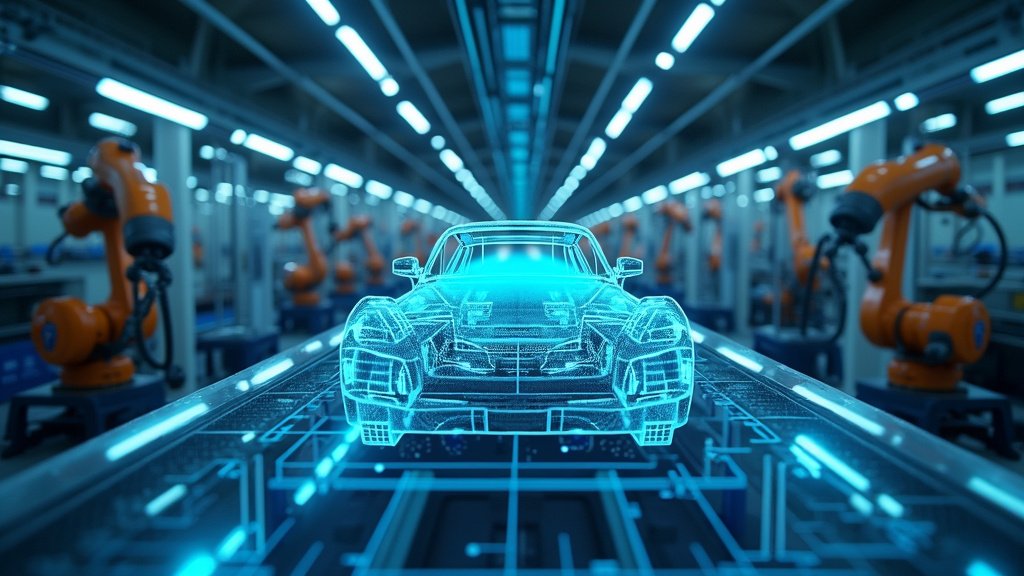The landscape of global manufacturing is undergoing a profound transformation, with China at its forefront, evolving rapidly from a hub of mass production to a powerhouse of technological innovation. This shift is evident across multiple high-tech sectors, where advanced manufacturing capabilities are not only meeting domestic demand but also significantly fueling global technological progress. Companies are increasingly leveraging sophisticated technologies, from artificial intelligence and robotics to digital twins and intelligent vehicle systems, to create market-ready products that are making a huge difference worldwide.
The Evolution of China’s Industrial Might
China’s high-tech manufacturing sector has demonstrated robust growth, with output increasing by 8.7% year-on-year in the first half of 2024. Investment in high-tech industries has also seen a substantial surge of 9.5% during the same period. This expansion is underpinned by strategic national initiatives like the ‘Made in China 2025’ program, which aims to elevate the country’s capabilities in critical advanced manufacturing fields, including robotics, aerospace, and new energy vehicles. As a result, China now accounts for a significant 28.7% of global manufacturing output, a testament to its evolving industrial base.
Key Sectors Spearheading Technological Advancement
Several industries are at the vanguard of this innovation, showcasing China’s integrated approach to development.
The New Energy Vehicle (NEV) Revolution
The automotive sector, particularly new energy vehicles, exemplifies this trend. The MAEXTRO S800, a luxury sedan jointly developed by JAC Motors and Huawei, highlights advancements in digital chassis technology and Huawei’s intelligent driving systems. Its production at the MAEXTRO Super Factory utilizes over 1,800 intelligent robots and a ‘digital twin’ plant for real-time monitoring and optimization. Similarly, NIO employs industrial AI and robotics in its advanced manufacturing facilities, demonstrating a commitment to automated production. China has become the global leader in NEV production and sales, accounting for 66% of worldwide sales in 2023 and becoming the first nation to produce 10 million NEVs annually in late 2024. Huawei, through its Harmony Intelligent Mobility Alliance (HIMA), is also a major force, providing intelligent driving software and systems for various automakers, solidifying its role in the future of smart mobility.
Robotics and Automation: The Rise of the Smart Factory
China has firmly established itself as the world’s largest market for industrial robots and a leading global producer. Companies like Siasun Robot & Automation, EFORT Intelligent Robot Co., Ltd., DJI, and Ubtech Robotics are prominent players, contributing to widespread adoption of automation in manufacturing, logistics, and service industries. The increasing robot density in Chinese factories, reaching 470 units per 10,000 workers by 2023, reflects a strategic move towards enhanced efficiency, improved quality, and addressing labor cost challenges. This surge in domestic production and application gives Chinese firms a competitive edge and drives innovation in robotics.
Digital Transformation: Embracing Digital Twins and AI
Advanced manufacturing in China is increasingly characterized by sophisticated digital technologies. The adoption of ‘digital twin’ technology is accelerating across industries, particularly in manufacturing and automotive sectors, enabling virtual representation and real-time simulation for optimized operations, predictive maintenance, and lifecycle management. The integration of AI further enhances these capabilities, transforming factories into intelligent, self-evolving systems. These advancements are crucial for meeting production targets and driving continuous improvement.
Global Implications and Competitive Dynamics
China’s manufacturing innovations are not confined to its borders; they are reshaping global supply chains and technological competitiveness. The country’s high-technology exports constitute a significant portion of its manufactured goods, reflecting a shift towards higher value-added products. Chinese companies are increasingly exporting advanced technologies and products, especially to the Global South, where affordable Chinese innovations are aiding economic development. While these advancements present significant opportunities, they also create new competitive dynamics, leading to international discussions around trade policies, tariffs, and supply chain resilience.
A New Era of Innovation
China’s manufacturing sector is undeniably a critical driver of global technological innovation. Through substantial investment in advanced manufacturing, a focus on cutting-edge technologies like AI and robotics, and strategic government support, Chinese industries are producing not just goods, but also pioneering solutions that define future technological trends. The ongoing evolution of smart factories, intelligent vehicles, and advanced industrial automation signifies China’s central role in shaping the next phase of global industrial development, impacting fields and interests across the planet.





